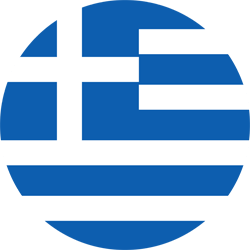The Exodus of Messolonghi, which took place on the night of 10 to 11 April 1826, is one of the most shocking and tragically glorious moments of the Greek Revolution. After a months-long suffocating blockade by the forces of Ibrahim Pasha and Kioutahi, the people of Mesolonghi, exhausted by hunger, disease and constant attacks, made a decision that was to be written in indelible letters in the history of humanity: to die free rather than surrender.
Exclusion and harsh conditions
The third siege of Messolonghi began in April 1825 and lasted almost a year. The city was surrounded by land and sea. Supplies were cut off, hunger became unbearable, and the besieged were reduced to feeding on mice, roots and grass. Despite the unbearable conditions, the defenders of the city, men, women and children, heroically held their ground.
Exodus as an act of supreme sacrifice
On 10 April 1826, on the night of Lazarus, the Mesolonghians attempted the Exodus. About 3,000 men, together with women and children, divided into three columns, tried to break the cordon and escape in the darkness and rain. The plan was betrayed – the Ottomans and the Egyptians were waiting for them. A massacre ensued.
Hundreds were killed on the spot. Others fell into enemy hands and were sold as slaves. Only a few managed to escape. Many of those who stayed behind blew up powder magazines, preferring death to captivity. Figures such as Christo Botsari, Markos Botsaris (who had fallen earlier in the battle of Karpenisi), and the abbot Christoforos of the Monastery became symbols of resistance.
The repercussions in Greece and the world
The Exodus of Messolonghi was not just a military event. It was an act of supreme self-sacrifice and proved that the Greek people were fighting for ideals and not just for political independence. This sacrifice shocked Europe. Philhellenes, poets, artists and intellectuals – such as Hugo, Delacroix, Pushkin – were inspired and mobilised.
Eugene Delacroix captured the tragedy in his famous painting ‘Greece in the ruins of Messolonghi’, while Dionysios Solomos wrote the heartbreaking ‘Hymn to the Death of the Thief’ and the poem ‘Free Besieged’, which capture the internal conflict, hunger, faith and greatness of the fighters.
Messolonghi as a symbol of freedom
The Exodus of Messolonghi was recognised as a supreme act of resistance and self-sacrifice. Since then, the city acquired the title of ‘Holy City’, the only such designation in Greece. The Alonaki, the Garden of Heroes, the ruins of the city – all monuments to an unsurpassed contribution to freedom.
The impact of the Exodus on the evolution of the Revolution
Despite the massacre, the Exodus was not a defeat. On the contrary, it was a turning point. It awakened consciences, revived the philhellenic wave and strengthened support for the Greeks in European parliaments. The images of resistance and sacrifice, the stories of bravery and pride, reinforced the moral superiority of the Struggle and gave the Revolution international recognition. Through Messolonghi, the world saw the Greek people as the bearers of freedom and dignity.
The legacy of the Exodus
The Exodus is not just a historical memory. It is a lesson, an inspiration, a legacy of values. It is a reminder that in every age, freedom requires sacrifice. And that the light of history is lit by those who chose to fall on their feet rather than live on their knees.




